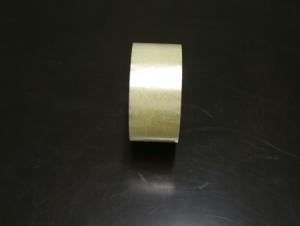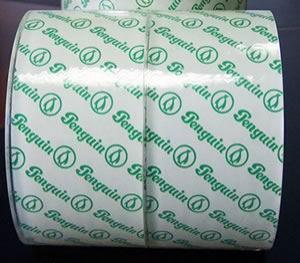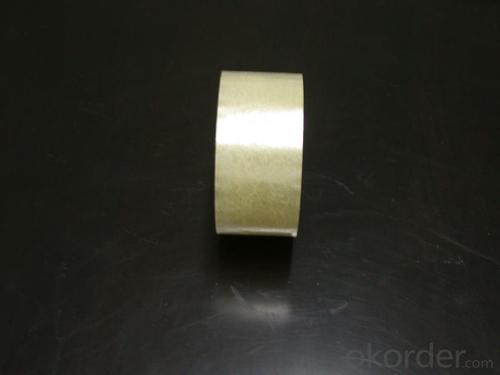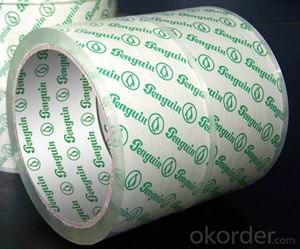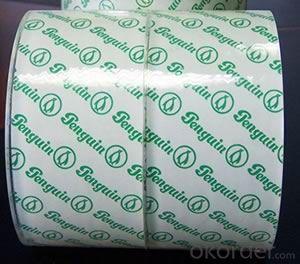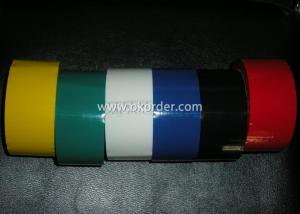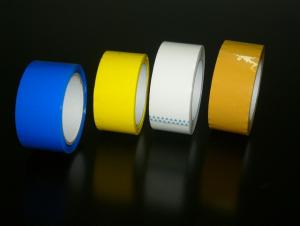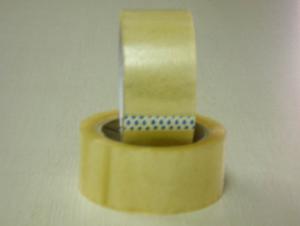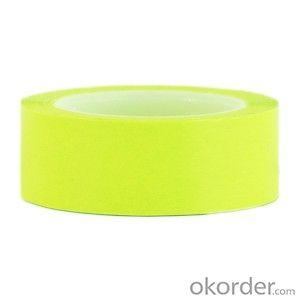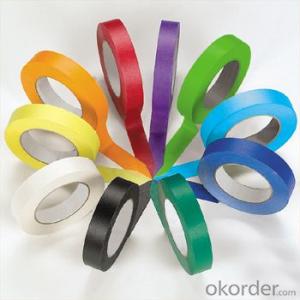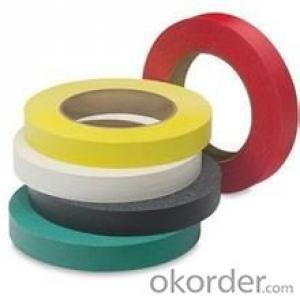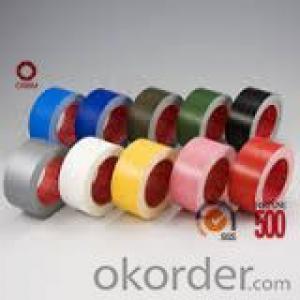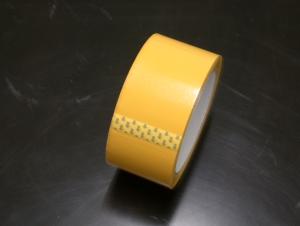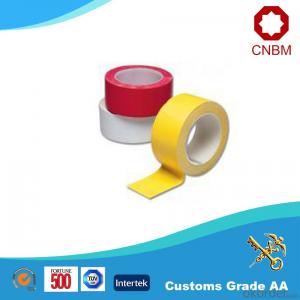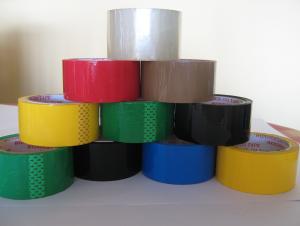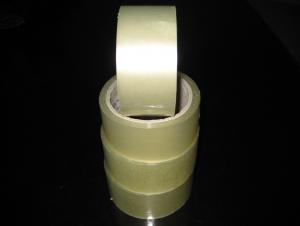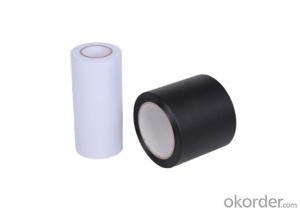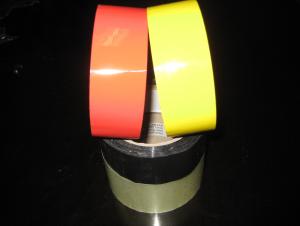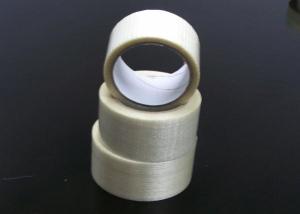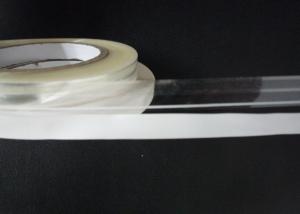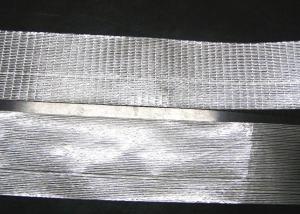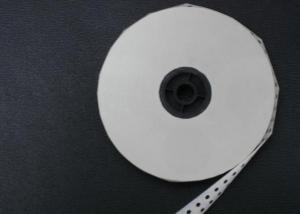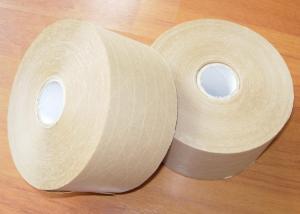Industry BOPP Tape Cylinder Packaging
- Loading Port:
- Shenzhen
- Payment Terms:
- TT
- Min Order Qty:
- 3000USD roll
- Supply Capability:
- 1x 20 ft roll/month
OKorder Service Pledge
OKorder Financial Service
You Might Also Like
Quick details:
Material: BOPP
Use: Carton Sealing
Adhesive Side: Single Sided
Adhesive: Acrylic
Adhesive Type: Water Activated
Design Printing: Offer Printing
Place of Origin: China (Mainland)
color: clear, super clear, crystal clear, red, blue, brown, yellow, green etc
Specifications:
| ItemNo. | Carrier | Adhesive | Total Thickness | Initial Tack | Peel Adhesion | Holding Power | Tensile Strength | Elongation |
| BP-40 | BOPP film | water based acrylic | 40 micron | >18# | 0.5kgf/25mm | >24h | >30N/cm | <180% |
| BP-45 | BOPP film | water based acrylic | 45 micron | >18# | 0.5kgf/25mm | >24h | >30N/cm | <180% |
| BP-50 | BOPP film | water based acrylic | 50 micron | >20# | 0.5kgf/25mm | >24h | >30N/cm | <180% |
| BP-65 | BOPP film | water based acrylic | 65 micron | >24# | 7.88N/25mm | >40h | >30N/cm | <180% |
Application:
Bopp tape is mainly for Carton sealing & packing, Light duty packaging, bundling, holding, and other office & household use.
Packing:
Paper Core ID: 76mm
Jumbo size: 1280mm x 4000m; 1620mm x 4000m
Cut roll size: As per customer's requirement
Cut rolls: 6 rolls per shrink, 36/54/72 rolls per carton with or without pallet
Jumbo rolls & log rolls: Packed with kraft paper and stretch wrap film, with or without pallet
Company Advantages:
1. Stable financial status and sound reputation as a state invested corporation under the direct administration of the State Council of PRC;
2. CNBM’s world wide influence as one of the 500 global fortunes specializing in building materials including adhesive tapes;
3. More than a decade’s exporting experience and technology in adhesive tape industry;
4. Preferencial shipping channels, with a separate team dealing with shipping.
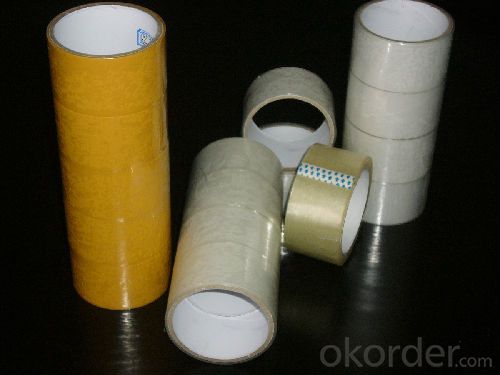
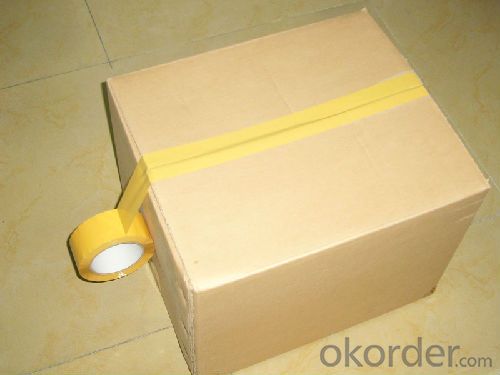
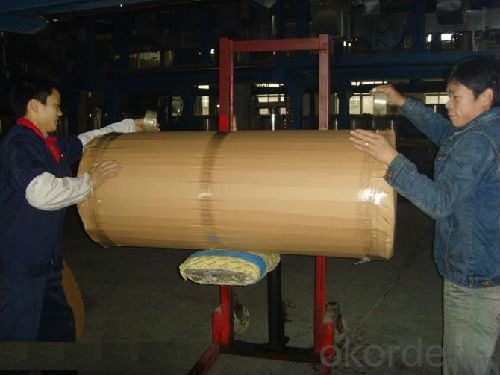
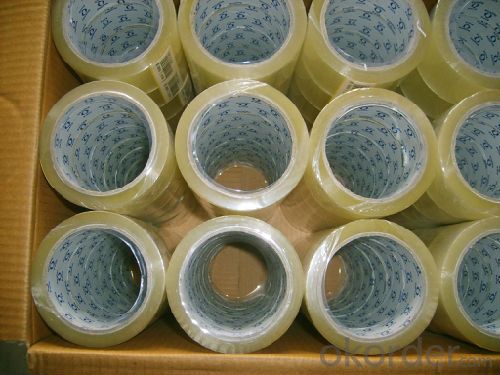
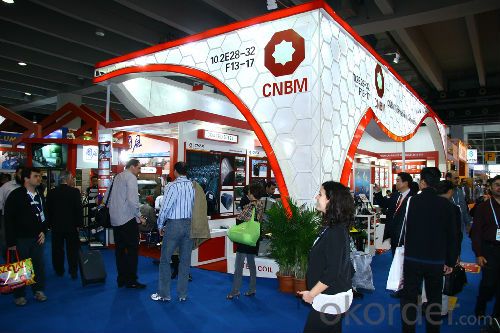
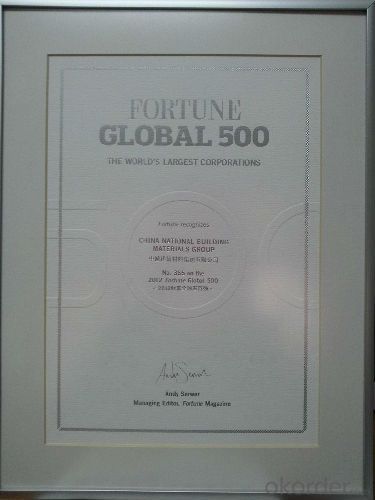
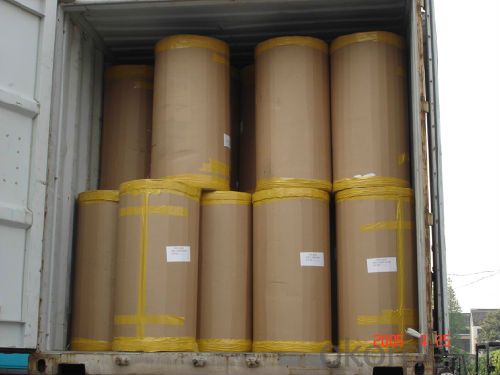
- Q: Are there any regulations or standards for packaging tape?
- Yes, there are regulations and standards for packaging tape. In many countries, including the United States and European Union, packaging tape must comply with specific regulations and standards to ensure its safety and effectiveness in securing packages. These regulations typically cover aspects such as material composition, adhesive properties, thickness, tensile strength, and overall durability. They aim to ensure that packaging tape meets certain quality and performance standards, allowing it to withstand the rigors of transportation and handling without compromising the integrity of the package. Additionally, some industries may have specific requirements for packaging tape, such as those related to temperature resistance or tamper-evident features. Therefore, it is important for manufacturers and users of packaging tape to be aware of and adhere to these regulations and standards to ensure the proper functioning and safety of their packaging materials.
- Q: How do I prevent packaging tape from losing its color over time?
- To prevent packaging tape from losing its color over time, it is essential to store it properly. Keep the tape in a cool and dry place, away from direct sunlight or excessive heat. Exposure to these elements can cause the color to fade. Additionally, make sure the tape is tightly sealed after each use to prevent any air or moisture from affecting its color.
- Q: Can packaging tape be used for packing fragile items?
- Indeed, packaging tape is suitable for packing fragile items; nevertheless, it is worth mentioning that relying solely on packaging tape might not offer adequate safeguarding for delicate or breakable objects. To ensure proper cushioning and prevent damage during transit, it is advisable to utilize supplementary packaging materials like bubble wrap, foam peanuts, or corrugated cardboard. Afterward, the package can be securely sealed and the overall packaging strengthened using the packaging tape.
- Q: How does packaging tape differ from masking tape?
- Packaging tape and masking tape are distinct types of tapes serving different purposes and possessing unique traits. Specifically intended for sealing and securing packages or boxes, packaging tape finds common use in the shipping and packaging industries. It is typically constructed from robust and long-lasting materials like polypropylene or PVC, ensuring exceptional adhesion and resistance against tearing or splitting. Its notable high tensile strength guarantees the package remains securely sealed during transit or storage. Moreover, packaging tape generally boasts a potent adhesive that adheres well to various surfaces, including cardboard, plastics, and metals. It is available in different widths and lengths to accommodate diverse packaging requirements. In contrast, masking tape primarily finds application in painting and DIY projects. Composed of a thinner and less resilient material, such as crepe paper, it possesses a less aggressive adhesive in comparison to packaging tape. The primary objective of masking tape is to establish clean, straight lines and safeguard surfaces from paint or other liquids during painting tasks. Masking tape can be effortlessly applied and removed without leaving any residue or causing damage to the surface. Furthermore, it is recognized for its ability to conform to uneven surfaces, enabling precise masking and detailing work. To summarize, packaging tape is designed for secure sealing and packaging of boxes and packages, whereas masking tape is primarily utilized for painting and surface protection. Packaging tape is stronger, more durable, and possesses a more potent adhesive, whereas masking tape is thinner, more flexible, and can be effortlessly removed without leaving any residue.
- Q: How do I choose the right packaging tape for my needs?
- To choose the right packaging tape for your needs, consider factors such as the type of material you are packaging, the weight and size of the package, the desired level of seal strength, and the environment the package will be exposed to. Look for packaging tapes specifically designed for your intended purpose, such as heavy-duty tapes for heavier or bulkier items, water-resistant tapes for damp environments, or high-strength tapes for added security. Additionally, consider factors like ease of use, cost-effectiveness, and adhesive properties to ensure you select the most suitable packaging tape for your specific requirements.
- Q: How does packaging tape perform in dusty environments?
- Packaging tape generally performs well in dusty environments, but its effectiveness may vary depending on the specific conditions and the quality of the tape. Dust particles can potentially interfere with the adhesion of the tape, making it less sticky and less reliable in securing packages. However, most packaging tapes are designed to be resistant to dust and other contaminants, and they have a strong adhesive backing that can withstand moderate levels of dust. In dusty environments, it is recommended to choose packaging tapes that have a higher tack or adhesive strength. These tapes are specifically engineered to provide better adhesion and stickiness, even in dusty conditions. Additionally, selecting tapes with a thicker backing material can also help to prevent dust particles from penetrating through the tape and compromising its adhesive properties. It is important to note that excessive dust accumulation may still impact the performance of packaging tape, especially if the dust is fine and abundant. In such cases, it is advisable to regularly clean the package surfaces before applying the tape to ensure optimal adhesion. Adequate surface preparation, such as wiping down the area with a clean cloth or using compressed air to remove the dust, can help improve the tape's performance in dusty environments. Overall, while packaging tape can generally perform well in dusty environments, it is essential to consider the quality of the tape, the level of dust exposure, and the proper surface preparation to ensure optimal adhesion and package security.
- Q: What is the average width of packaging tape?
- The average width of packaging tape typically ranges from 1.88 inches to 2 inches. This standard width allows for efficient sealing of boxes and packages, providing a secure and reliable closure. However, it is important to note that there are variations in tape widths available in the market, with some tapes being narrower or wider to accommodate specific packaging needs or preferences.
- Q: What are the tapes for packing tape?
- Size, core, stationery, glue, wet water, leather tape, double sided tape series
- Q: Can packaging tape be used for securing cables or cords?
- Yes, packaging tape can be used for securing cables or cords. While it may not be the most ideal choice, especially for long-term or heavy-duty applications, packaging tape can temporarily secure cables or cords together. It can help prevent them from tangling or getting in the way, especially during transportation or storage. However, it is important to note that packaging tape is not designed specifically for cable management, and as such, it may not provide the same level of durability or flexibility as specialized cable ties or straps. For more permanent or heavy-duty cable management, it is recommended to use products specifically designed for that purpose.
- Q: How does packaging tape perform on low-friction surfaces?
- Packaging tape generally does not perform well on low-friction surfaces. Low-friction surfaces, like smooth plastics or certain types of laminates, lack texture and adhesion, making it challenging for packaging tape to effectively stick and hold. The lack of friction allows the tape to easily slide or peel off the surface, compromising the integrity of the package. In such cases, it is advisable to use alternative methods like shrink wrapping, heat sealing, or adhesive sprays specifically designed for low-friction surfaces. These alternatives provide better adhesion and ensure the package remains securely sealed during handling and transportation.
1. Manufacturer Overview
| Location | Fujian, China |
| Year Established | 1994 |
| Annual Output Value | Above US$ 1000 Million |
| Main Markets | Southeast Asia; South America; Eastern Europe; North America; Northern Europe; South Asia; Western Europe; Africa; Mid East |
| Company Certifications |
2. Manufacturer Certificates
| a) Certification Name | |
| Range | |
| Reference | |
| Validity Period |
3. Manufacturer Capability
| a) Trade Capacity | |
| Nearest Port | Shenzhen |
| Export Percentage | 41% - 50% |
| No.of Employees in Trade Department | 101-200 People |
| Language Spoken: | English; Chinese |
| b) Factory Information | |
| Factory Size: | Above 10,000 square meters |
| No. of Production Lines | Above 10 |
| Contract Manufacturing | produce single sided tapes,double sided tapes, masking tape, Opp tape |
| Product Price Range | Low; Average |
Send your message to us
Industry BOPP Tape Cylinder Packaging
- Loading Port:
- Shenzhen
- Payment Terms:
- TT
- Min Order Qty:
- 3000USD roll
- Supply Capability:
- 1x 20 ft roll/month
OKorder Service Pledge
OKorder Financial Service
Similar products
Hot products
Hot Searches
Related keywords
